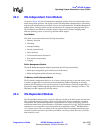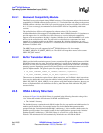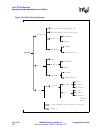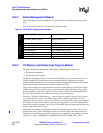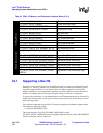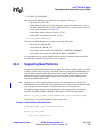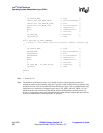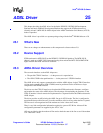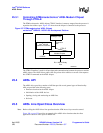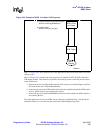
Intel
®
IXP400 Software
Operating System Abstraction Layer (OSAL)
Programmer’s Guide IXP400 Software Version 2.0 April 2005
Document Number: 252539, Revision: 007 323
The OSAL layer also provides APIs for dealing with the following situations:
• Transparently accessing I/O-memory-mapped hardware in different endian modes
• Transparently accessing SDRAM memory between any endian type and big endian, for the
purpose of sharing data with big-endian auxiliary processing engines
The OSAL layer supports the following endianness modes:
• Big endian
• Little endian
• Little endian address coherent where
— Core is operating in little endian mode but the bus addresses are swapped
— 32-bit word accesses are made automatically in big endian mode
— Byte and 16-bit half-word addresses are swapped (address XOR 3)
• Little endian, data coherent where,
— Core is operating in little endian mode but the bus data is swapped
— Byte accesses are made automatically in big endian mode
— 32-bit word and 16-bit half-word values are swapped
In little endian mode, users must specify coherency modes before using the IO/Memory access
macros (for example, IX_OSAL_READ_LONG, IX_OSAL_WRITE_LONG). This can be
performed by declaring Little Endian Coherency mode in the customized mapping declarations
under os/vxworks/include/platforms/ixp400/.
Table 64 provides an overview of the I/O memory and endianness support module.
Table 64. OSAL I/O Memory and Endianness Interface (Sheet 1 of 2)
IX_OSAL_COMPONENT_MAPPING select endianness mapping type
IX_OSAL_MEM_MAP_TYPE select static/dynamic I/O mapping
Defines
required
IX_OSAL_SDRAM_ENDIANNESS select SDRAM endianness
IX_OSAL_MEM_MAP map I/O memory
IX_OSAL_MEM_UNMAP unmap I/O memory
IX_OSAL_MMAP_PHYS_TO_VIRT physical to virtual translation
I/O
Mapping
IX_OSAL_MMAP_VIRT_TO_PHYS virtual to physical translation



